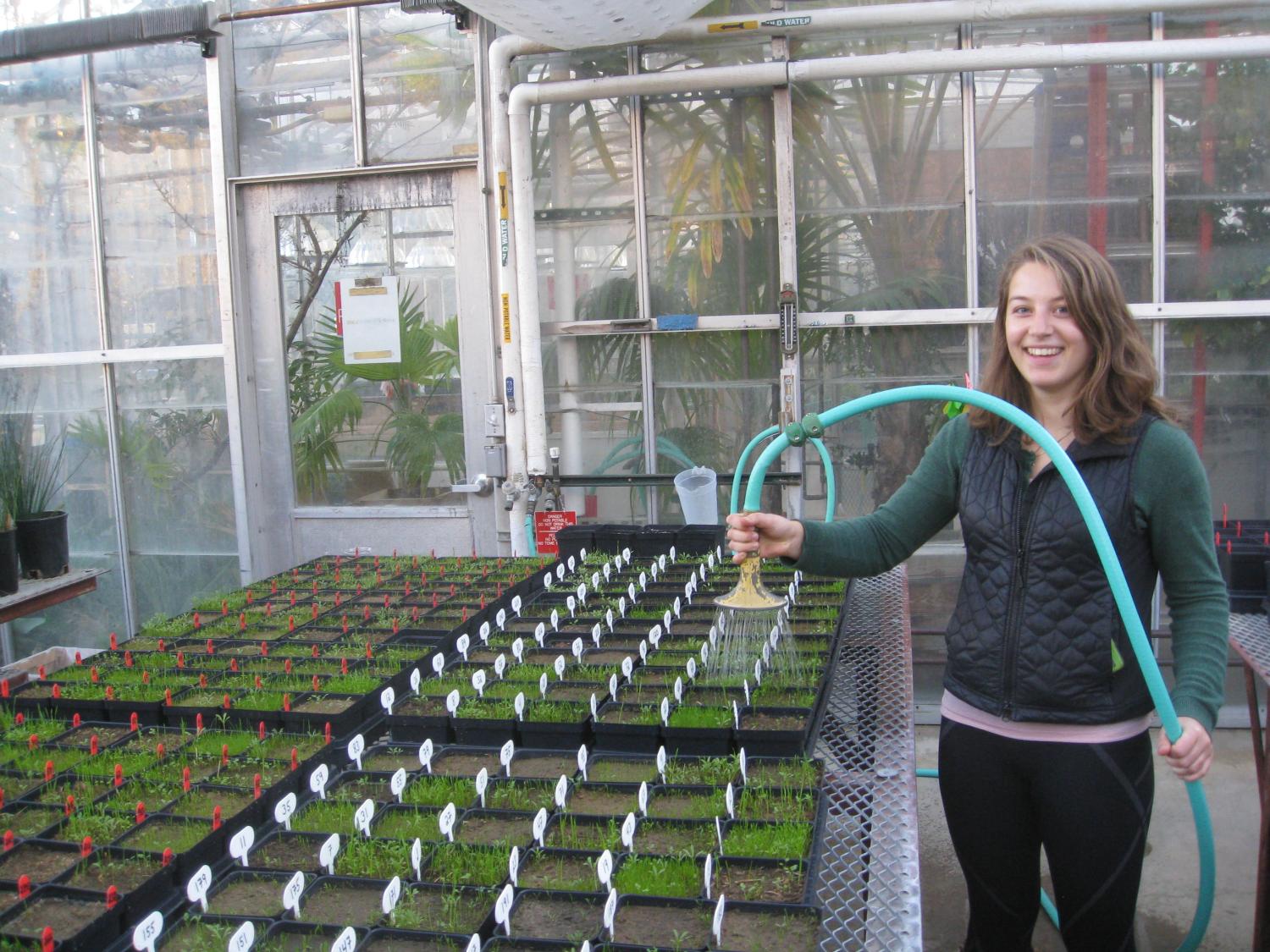Spring break research sparked passion for future project - GraceAnne Casto
When I was a sophomore at CU I started working in the Suding Plant Ecology Lab, where I assisted with germination experiments in the greenhouse with seedlings from Carrizo Plain National Monument, in California. During spring break, I received funding to travel to Carrizo to assist the field research team there. I arrived at Carrizo at night, so I hadn’t seen much of the surrounding area. I spent the whole week working in the rugged desert and had gotten used to the dry mudflats, patches of vibrant wildflowers, and surrounding mountains. I was driving away from Carrizo on my last day on my way to the airport, when I summited the mountain road and was confronted with a much different scene: miles of oil drills, interrupted only by large scale farms, all surrounding a dusty river that had been channeled into a concrete canal. This literal birds-eye-view revealed the figurative one: the work I did at Carrizo was just a small piece of the great challenge that is natural resource management in California. Suddenly the significance of the Carrizo Plain Ecosystem project dawned on me. I realized the science I had been a part of was not only concerned with the production of knowledge, but with the production of something that can be put into practice and make a difference for people in California. The rewarding feeling of being part of such an important project left me wanting more, so I decided to write an Honor’s Thesis. For my thesis I am germinating seedbank samples from Carrizo in the greenhouse to elucidate burrowing herbivore, precipitation, and plant community effects on two invasive species of grasses. My research will contribute to a predictive population model for these invasive species that will be used by land managers and policy makers to decide how best to steward Carrizo and the surrounding areas in the face of changes in climate and land use.



